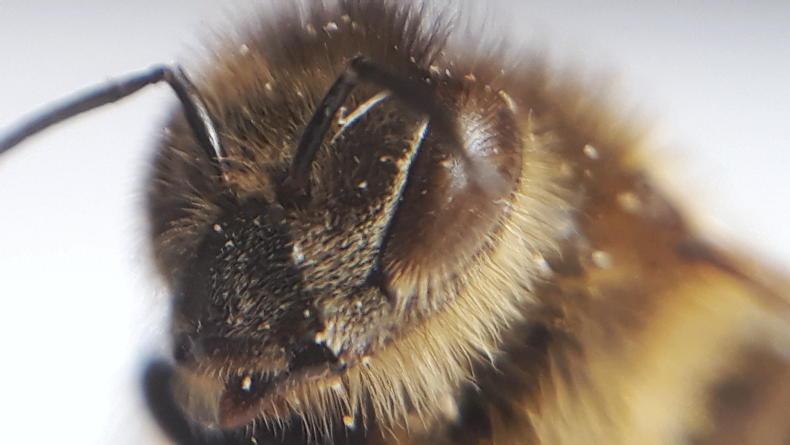Did you ever wonder why a honeybee, or for that matter, any bee or fly, will take flight when approached. The reason for this has to do with their eyes.
Observation will show you that they have very large eyes on both sides of their head.
In the case of the honeybee, the drone’s eyes are larger than the queen and worker bee.
Since the bee has limited head movement, it therefore, must compensate for this restriction in vision of the area around itself. To achieve this, nature has provided these very large eyes, known as compound eyes.
These compound eyes, elongated and convex, consist of thousands of individual eyes
Being compound, indicates that several parts are at play here. These compound eyes, elongated and convex, consist of thousands of individual eyes.
The drone (male honeybee) has the greater number of these individual eyes within the compound eye, being necessary during flight to see the queen for the mating process.
The number of individual eyes, known as ommatidia, in each caste range from approximately 8,000 in the drone, 5,000 in the worker bee and the queen has about 4,000.
When these eyes are examined, it can be seen, without going into technical details, that the individual eyes are hexagonal in shape.
A number of hairs may be observed protruding from the compound eyes
Some of these individual eyes are fixed at different angles within the compound eye, for instance, in the upper part of the drone eye they point upwards and are larger than those located in the mid or lower part. A number of hairs may be observed protruding from the compound eyes.
While the picture of what the bee sees is different to what humans see, it is what they see that is of importance to them. In terms of colour, we can see red where they cannot. Likewise, they see ultra-violet (UV) light, where we cannot, unless using special glasses or filters. Flowers reflect UV light from their petals to attract bees.
Any tiny chink of blue sky is sufficient for the bee to navigate
Another type of light which the bee can see is polarised light. Suffice to say that this type of light from the sun is very important in their daily life. While we humans cannot see it, bees depend on it for navigation. Any tiny chink of blue sky is sufficient for the bee to navigate.
As the sun moves while she is foraging, she compensates for that movement so that she can return to her hive.
Shapes are important to bees. Patterns of broken style work best for them. A lot of experimental work has been done on this subject.
Apart from the two compound eyes which cover much of the bees face, she has three further eyes on top of her head. These are called “ocelli” and are located triangularly.
Next time you see a dead bee, pick it up and search between the hairs on its head to locate the three little eyes
They are not used for vision, since the structure of the eye does not support it. However, they do collect light and are important in orientation.
Next time you see a dead bee, pick it up and search between the hairs on its head to locate the three little eyes. Also, take a good look at the compound eyes using a magnifying glass and marvel at their structure.
As for the live bee on a flower, your presence and movements have been seen before you can put a finger on them.









SHARING OPTIONS